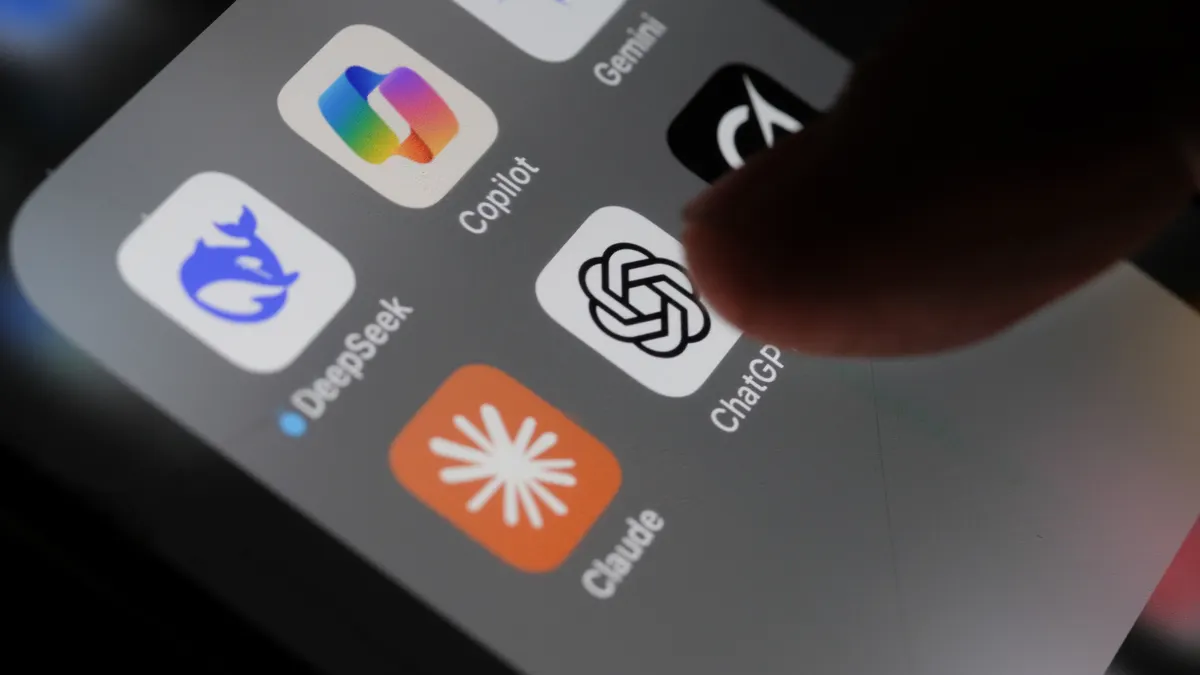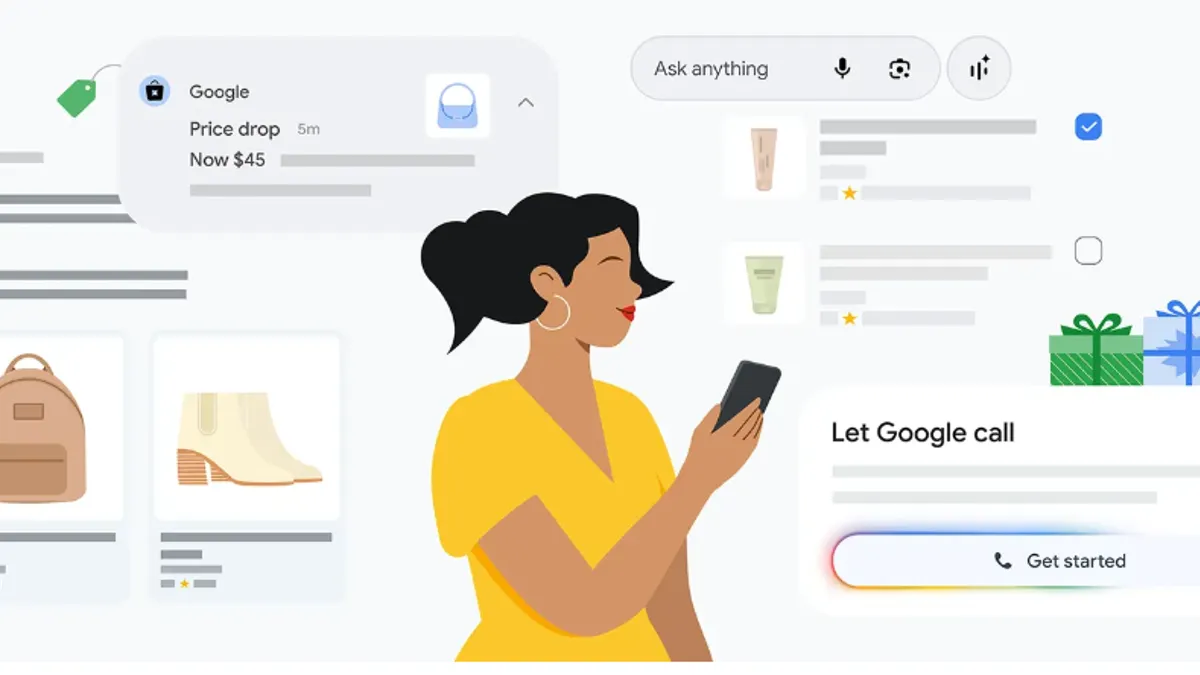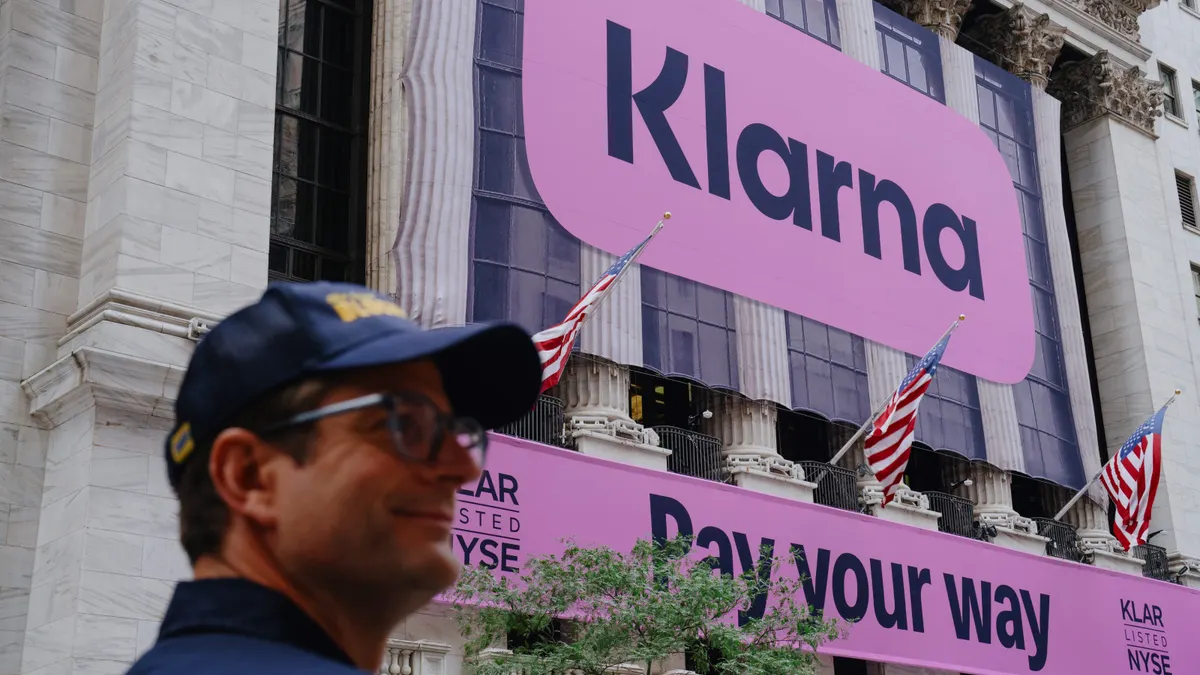Chatbots can be irksome features that pop up when you’re trying to navigate a page. Or they can be useful assistants, integral to your experience with a brand.
Bank of America’s Erica falls into the latter category, says Peter Wannemacher, principal analyst at Forrester.
The AI virtual assistant has serviced a record 3 billion client interactions, Bank of America announced last week. Nearly 50 million people have used it since its launch in 2018.
Key to its growth and adoption is the bank’s commitment to “high tech, high touch,” Jorge Camargo, head of digital platforms at Bank of America, told CX Dive.
“A big area of focus for us was: How can we find that balance between the AI support and the human support that Bank of America is known for?” Camargo said.
Erica proves its helpfulness to customers by consistently offering accurate information, Camargo and Wannemacher said. And rather than acting as a bottleneck as so many chatbots do, customers can either complete the task within Erica or Erica will put customers on the best path to reach their goal — including passing the torch to human representatives.
Customers were more satisfied with Bank of America’s mobile app — of which Erica is an integral part — than any other national bank, according to a J.D. Power assessment this spring. In an assessment of banking apps, Forrester found that the bank’s app meets or exceeds customers’ expectations in 23 out of 25 categories.
“Never before had a chatbot been as expansive,” Wannemacher said. “I'd say it was the first in terms of its robustness, the quality of it. It wasn't immediate, but Bank of America made it the centerpiece of their digital experience before anyone else did.”
Erica, launched in 2018, was a breakthrough in banking digital offerings. Mobile experiences since then have only grown in importance — two-thirds of customers want to be able to do all their banking from their phones, according to Forrester.
Though other banks have tried to catch up, Bank of America’s Erica is still in the lead, Wannemacher said.
“It is not unique anymore, but it is superior,” Wannemacher said. “It is more consistent than other banks’ chatbots. It can do more than other banks’ chatbots. And it keeps the user in the interface more often than other banks’ chatbots.”
How Erica has changed, and where it’s headed
When it launched, Erica could answer 200 to 250 intents, or types of questions. Now, it can answer more than 700 intents.
“Over a seven year period, it's evolved significantly from just an assistant that was focused on servicing and reacting to client questions, to an assistant that is much more proactive now in trying to anticipate potential needs or making suggestions and recommendations,” Camargo said.
As clients started having more trust in the answers Erica provided, there was this question of whether Erica could do more for them, Camargo said. The team started working on making Erica anticipate customers’ concerns and put suggestions or recommendations in front of customers.
Today, about 50% to 60% of customers' interactions with Erica are proactive — the chatbot provides a suggestion and a customer proceeds to engage with Erica on the issue.
The effort has proved worthwhile. A J.D. Power assessment found customers are more satisfied with retail banking advice from Bank of America than any other bank.
“Most of the institutions that are at the top of the list have embedded in advice or guidance throughout their ecosystem,” Jennifer White, senior director for banking and payments intelligence at J.D. Power, told CX Dive in June. “So it's not that they're just implementing an in-person branch program that's taking them over the top. They're combining in person experiences with digital engagement.”
Those conversations in the Erica chat interface also offer an opportunity to propel the chatbot forward.
“We're always kind of taking this massive amount of data — that 3 billion is just a fantastic treasure trove of information for our data science team, who's always in there just analyzing those conversations and saying, 'OK, how can we do better?'"
The bank has also invested time and money to continually iterate on the experience.
“That tuning effort — we really think that it's not just a secret sauce from a client satisfaction perspective,” Camargo said. “A lot of the value and success that comes from Erica is there's just that ongoing investment in operations. It's not just a magical [thing] like I built it once, put it out into the world, and it just magically keeps performing.”
Bank of America makes changes to Erica every two or three weeks, Camargo said. Cumulatively, the bank has made over 75,000 improvements since launch.
‘High tech, high touch’
Bank of America built Erica to solve a customer's inquiry or direct customers along the best path when it cannot act on behalf of a customer.
If, for instance, a customer asks Erica what their routing number is, the chatbot can provide it. If the customer wants to pay a bill or send money, a customer can do that within Erica.
But there are other inquiries the chatbot cannot answer depending on the banking regulations, bank policy or the context of the issue.
Erica is able to identify the request and then, within the context of bank policy or client preference, determine the fastest path to resolution. If customers can’t do it within the chatbot, it can direct customers to the necessary channel whether it’s self service, a representative in a certain department of the contact center, or live chat.
A client, for example, might reach out after the death of a loved one about managing their estate. “Erica understands that that's an emotionally important conversation,” Camargo said. “So the best course of action is to create a connection right back to an agent in our state service and operations team.”
The goal was to avoid a rigid structure and to help customers along the path they want to take, not the one the bank would find it easier for them to take.
“We built a lot of understanding and nuance in terms of providing clients that recommendation,” Camargo said. “And of course, always, clients have the option right of asking for an agent if that's your preference.”
Growing trust and use with Erica
While younger generations are more comfortable with a chatbot interface, many older customers are not.
Bank of America's Gen Z clients use digital services and Erica at higher rates, but the banks was also able to encourage use of Erica across generations through design.
“One of the interesting enhancements that we made to Erica probably four years ago was it used to be like a floating affordance, a floating button that you would engage,” Camargo said. “From an experience design perspective, we turned that into more of a search experience. And that was actually tremendously helpful, because people know the search paradigm and are more comfortable with it.”
That design choice increased comfort with the chatbot, especially among older generations.
The bank was able to overcome the general climate of consumer distrust of AI in financial services through accuracy, speed and usefulness. A J.D. Power report from last year found that less than 30% of consumers trust AI chatbots for financial information and advice.
Fast, helpful information encourages repeat use, Camargo said. Nearly all clients, 98%, find the information they need via Erica. And it provides that information quickly — the average customer interaction with Erica is a mere 48 seconds.
When asked about the customer satisfaction with the app, Camargo said “it performs in line with all of our other channels.”
AI: Deterministic vs. generative
Erica leans on deterministic AI, rather than generative AI, which can hallucinate and provide inaccurate information, Camargo said.
“The AI is all about trying to understand your question, but then we're going to give you an answer that we are 100% comfortable with,” Camargo said. “Obviously, for us, for spaces like financial services, we can't afford to be 90% right. Clients expect our answers to be 100% right, 100% of the time.”
“Erica will continue to be primarily a deterministic natural language processing system,” he said.
Bank of America isn’t alone in taking such an approach. Across financial institutions, generative AI is being used in a way that's never directly exposed to the customer, Wannemacher said.
“We predict that will change sometime in the next couple of years, but the vast majority of financial institutions have no plans to do it imminently,” he said.
Bank of America is experimenting with generative AI, but it is taking a cautious approach — with a human in the middle.
“Now, where we see the opportunity, and we're experimenting and running a lot of like internal pilots with Gen AI, is in adding things like empathy and nuance,” Camargo said. “But for now again, nothing generative goes in front of clients.”






















